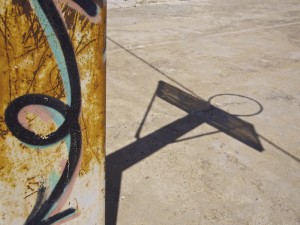Travel Photography Challenges: Finding Creative Perspectives in Greek Islands

Overcoming Visual Clichés in Popular Travel Destinations
Greece presents a unique challenge for photographers—its iconic imagery has been so thoroughly documented that it becomes all too easy to fall into the trap of simply recording what exists: weathered houses, ancient doors, blue-domed churches, endless whitewashed steps, and the ubiquitous cats. During this return visit to Astypalaea, I found myself confronting the same creative dilemma I had experienced four years earlier, and indeed, twenty years ago in Mexico.
This challenge has only intensified in the digital era. When film was the standard medium, the question “why take this photo?” carried significant weight due to material costs and processing time. Now, in an age of unlimited digital captures, this question becomes a thousand times more relevant as we navigate a world already saturated with images of popular destinations.
Evolving Approaches to Island Photography
My previous visits to Greek islands resulted in two distinct photo essays (The Greek Islands and The Greek Islands, Again), making this current collection effectively “The Greek Islands, Again, Again.” Reviewing those earlier works reveals both elements I still appreciate and others that now seem predictable—evidence that this creative struggle has been consistent throughout my photographic journey.
During this visit, I had ample time and frequent motivation to escape the cheerful chaos of an extended family holiday. Despite initial creative reluctance, I employed a strategy that serves any serious photographer: establish a specific task, create a defined project, and commit to its execution. This disciplined approach may occasionally feel laborious, but it inevitably yields meaningful results.
Creative Constraints as Photographic Liberation
For the past year, I’ve imposed a deliberate limitation on my personal and travel photography by working exclusively with a 20mm f/1.7 Panasonic lens (equivalent to 40mm on full-frame systems). This self-imposed constraint has proven paradoxically liberating, forcing creative solutions within defined parameters rather than relying on equipment versatility.
This approach initially led me toward detail-oriented compositions—an effective strategy for breaking free from the predictable mid-to-long-distance perspectives that dominate travel photography. While partially successful, this technique alone didn’t fully resolve my creative challenge.
Finding Unexpected Visual Interest in Ordinary Elements
What ultimately captured my imagination was an unexpected subject matter: I found myself repeatedly drawn to splashes of color interrupting the whitewashed uniformity of the island—often manifested in garish, cheap plastic objects typically edited out of “serious” travel photography. This exercise became valuable precisely because it required suspending conventional aesthetic judgments.
The approach demands imagining oneself as a being without preconceived notions—a viewer who doesn’t understand the form, function, history, or cultural context of these objects. Instead, one perceives only shapes and colors in their purest form, creating compositions based on visual relationships rather than subject matter significance.
This perspective shift transforms ordinary elements into abstract compositional components, allowing photographers to discover fresh visual possibilities in even the most photographed destinations.
